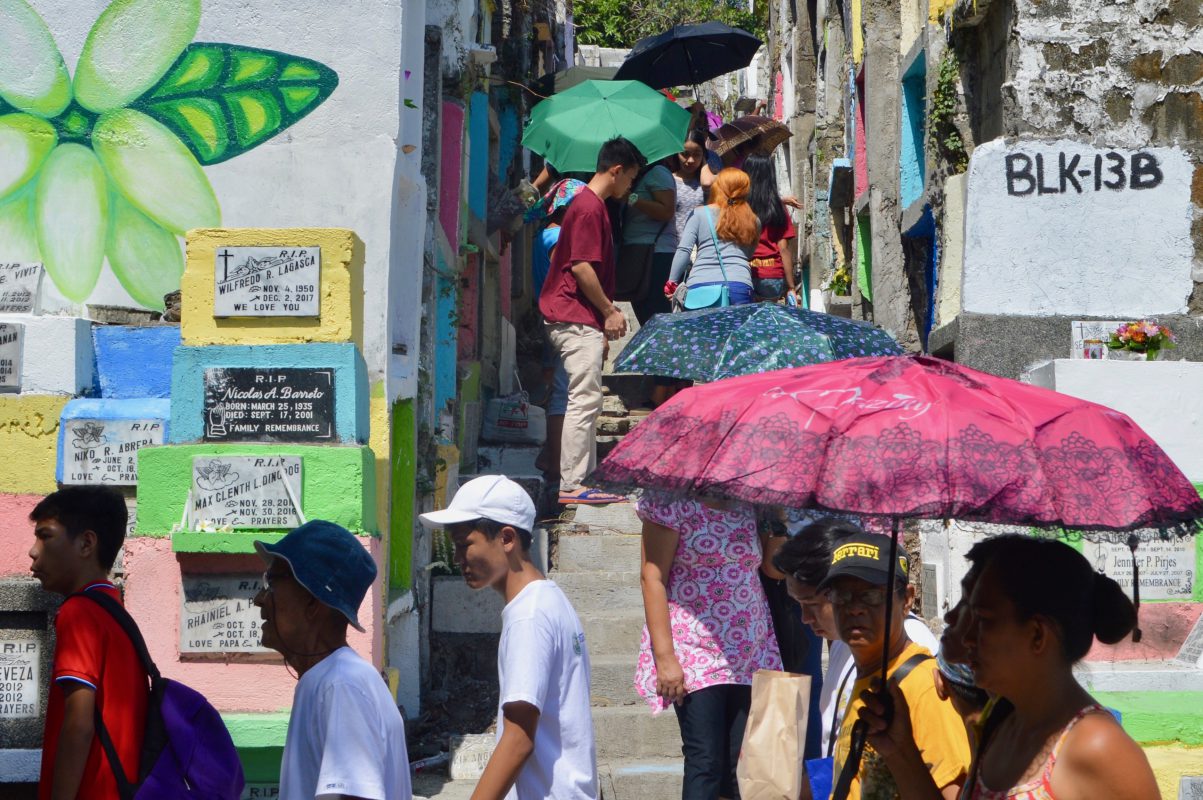
Undas: A Sense of Community that Transcends Death
Undas holds different meanings for Filipinos. For some, it is a time for rest – an extended holiday. For the majority, undas means visiting your family’s dearly departed in the cemetery, to remember their lives and offer prayers for the eternal repose of their souls.
Some see it as a solemn occasion, filled with novenas, rosaries, and masses celebrated in honor of the dead. Some see it as a big reunion, a time for celebration, filled with food, drinks, and merriment. Relatives watch vigil through the night, exchanging stories on both the living and the dead.
It is not even restricted to honoring just your own family’s dearly departed. We visit the tombs of our friend’s relatives, tombs of our friends and acquaintances, and even the tombs of celebrities and politicians.
We approach the season in different ways, but one thing remains constant no matter how you practice it – as Filipinos, we pay our respects to the dead, not just through prayers and stories, but with offerings of flowers and candles, food and drinks.
A shared tradition
Trying to unearth the origin of the term undas will yield different things. Some argue that it comes from the Batangueño term undras, which they use to refer to All Souls’ Day. Some say that it comes from the Spanish term ofrendas, which translates into “offering.”
Our undas shares its roots with another celebration of the dead, also from a former Spanish colony – Mexico’s Día de Muertos (Day of the Dead). It traces back to the time of the Aztecs, and their two major feasts dedicated to the dead – the Miccailhuitontili (“Feast of the Little Dead Ones”) and Miccailhuitl (“Feast of the Adult Dead”). It was adopted by the Spanish into the Catholic feasts of All Saints’ and All Souls’ Day.
During the Día de Muertos, families create altars to remember their dead, where they offer candles, flowers, and their loved ones’ favorite food. They also go to the cemetery, where they have a picnic, play music, and spend the night sharing stories and remembering the dead. The similarities are undeniable.
What, then, made this practice an enduring part of the Filipino tradition? Aside from being rooted in the Philippines’ deep Catholicism, this practice resonates with two of the Filipino people’s core values – the importance of family, and of pakikipagkapwa tao.
Pakikipagkapwa tao can be loosely translated in english as “empathizing with the other”; it is a sense of togetherness that Filipinos have not just with each other, but with other people as well. It’s the source of Filipinos’ world-renowned hospitality, and the concept of Bayanihan – helping each other in times of need.
At the heart of it all, undas is about the basic unit of the Filipino society – the family. That sense of pakikipagkapwa tao extends until after death – we feel a sense of togetherness with our families, and year after year, we remember and reflect, celebrating not just the lives of the departed, but the lives of the living as well.
This is the reason why the practice of undas varies from one family to another. Some families are religious, so it is a very solemn occasion. Some families camp out in the cemetery to watch vigil over the tombs of their loved ones. And some families just really want to spend time with each other, so they plan big family reunions, with relatives flying in from all over the world or vice versa.
This is the wonder and strength of undas, and of the Filipino culture of community – yes, the living remember the dead, but in turn, the dead brings the living closer to each other.




